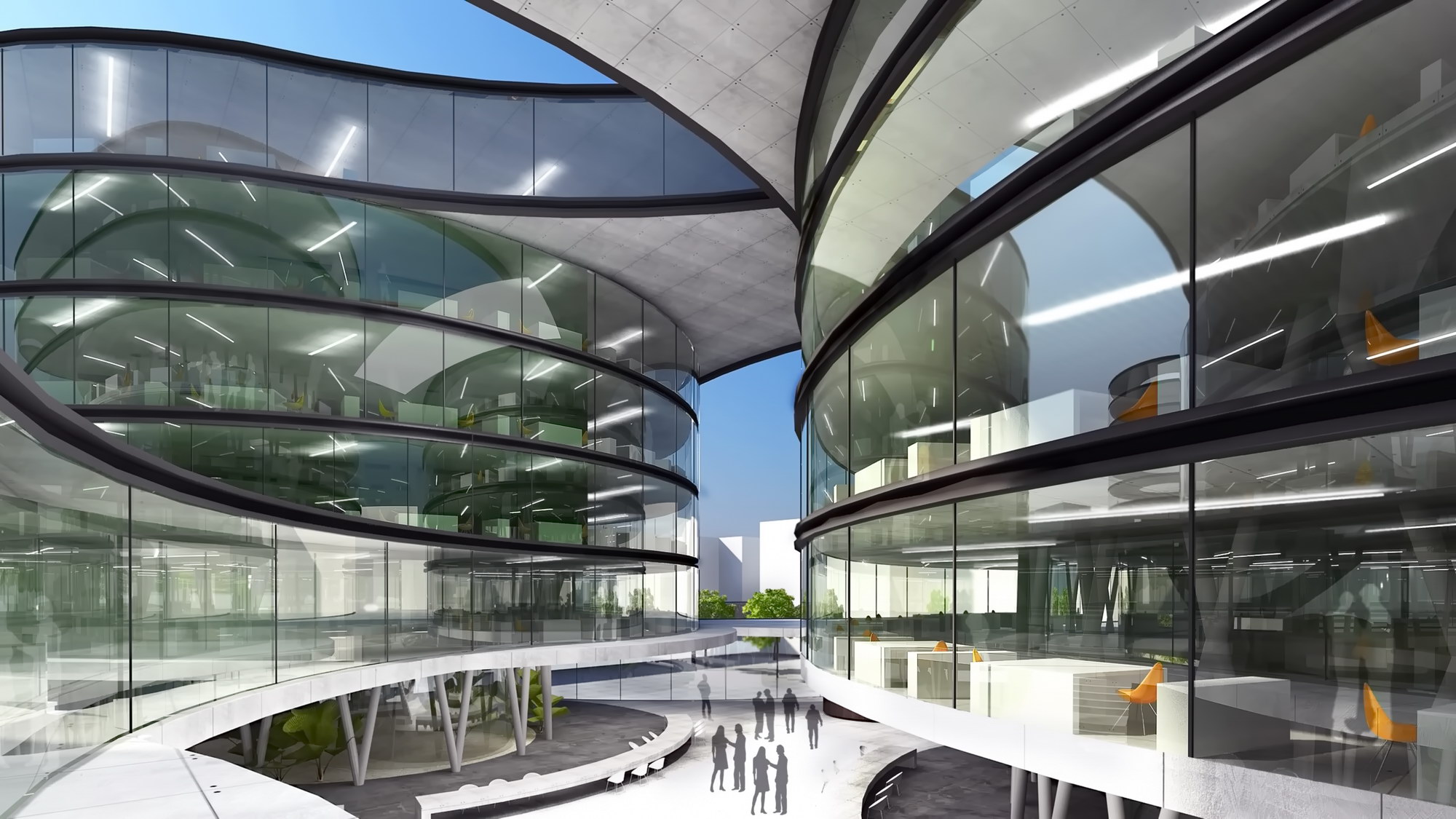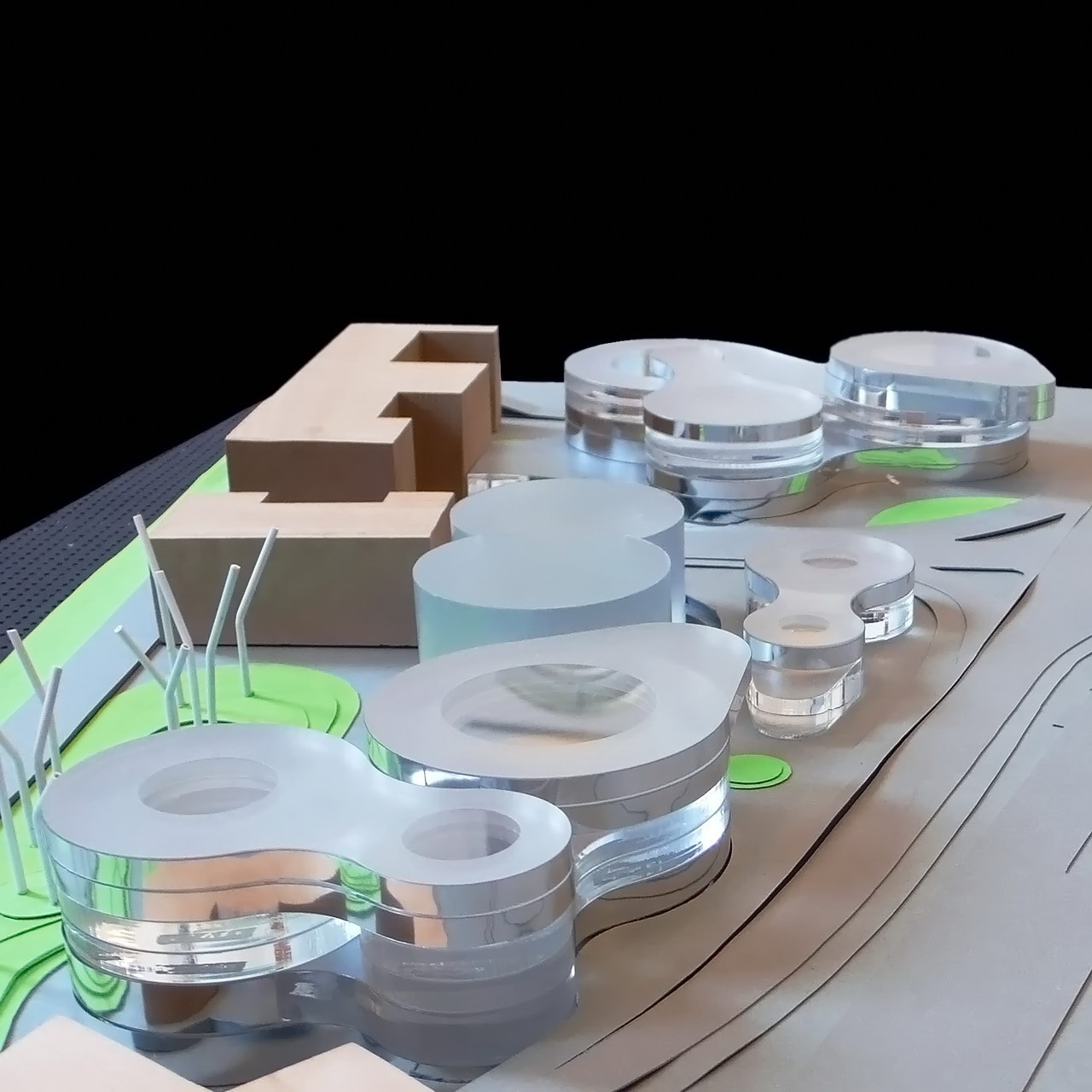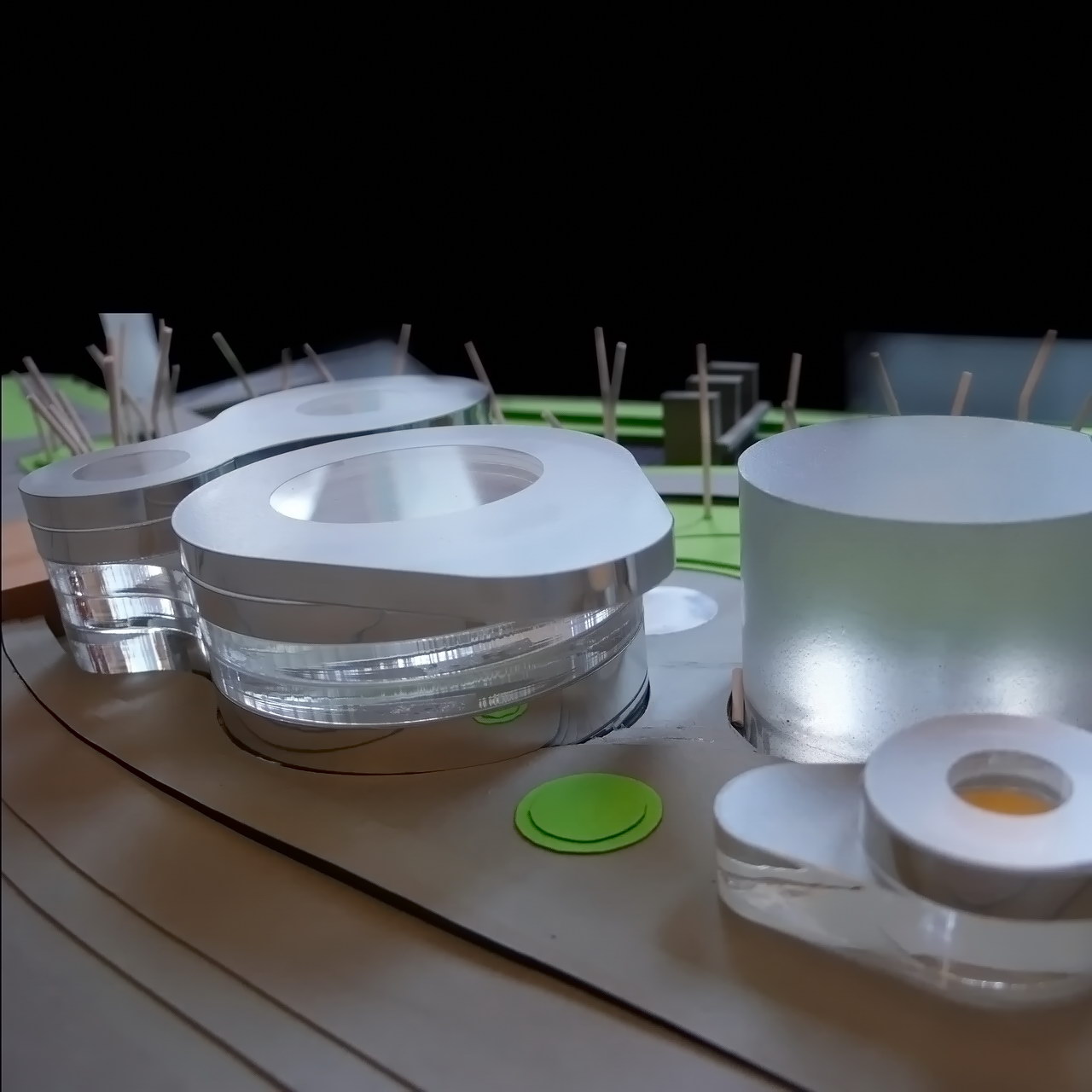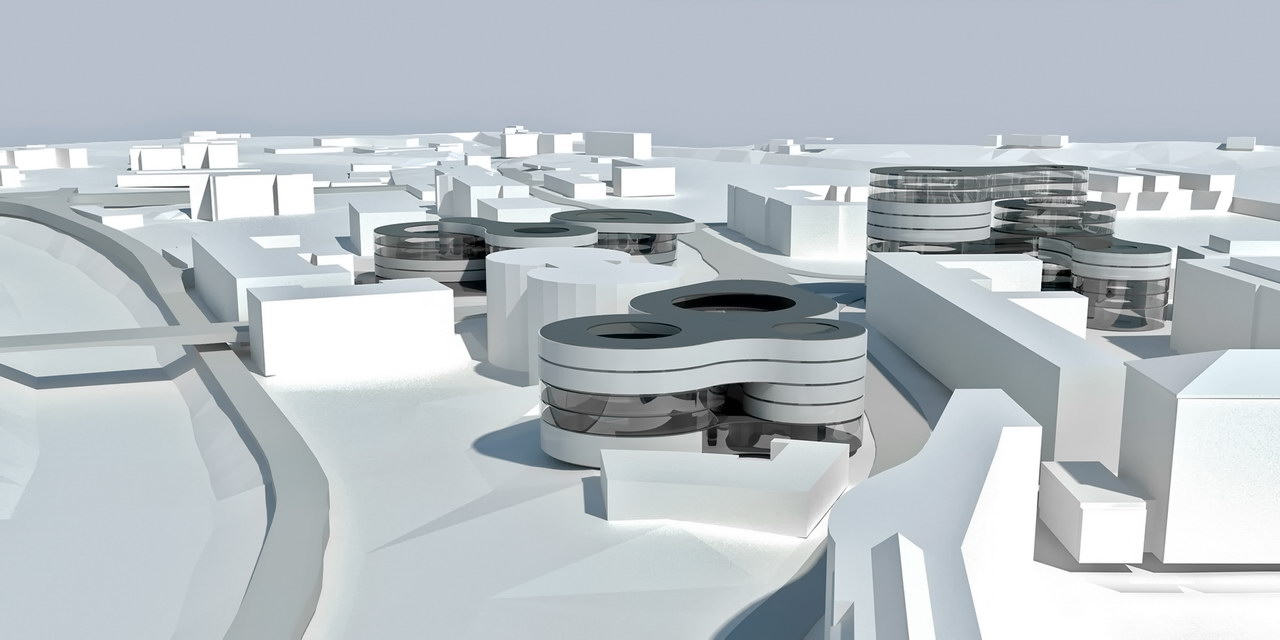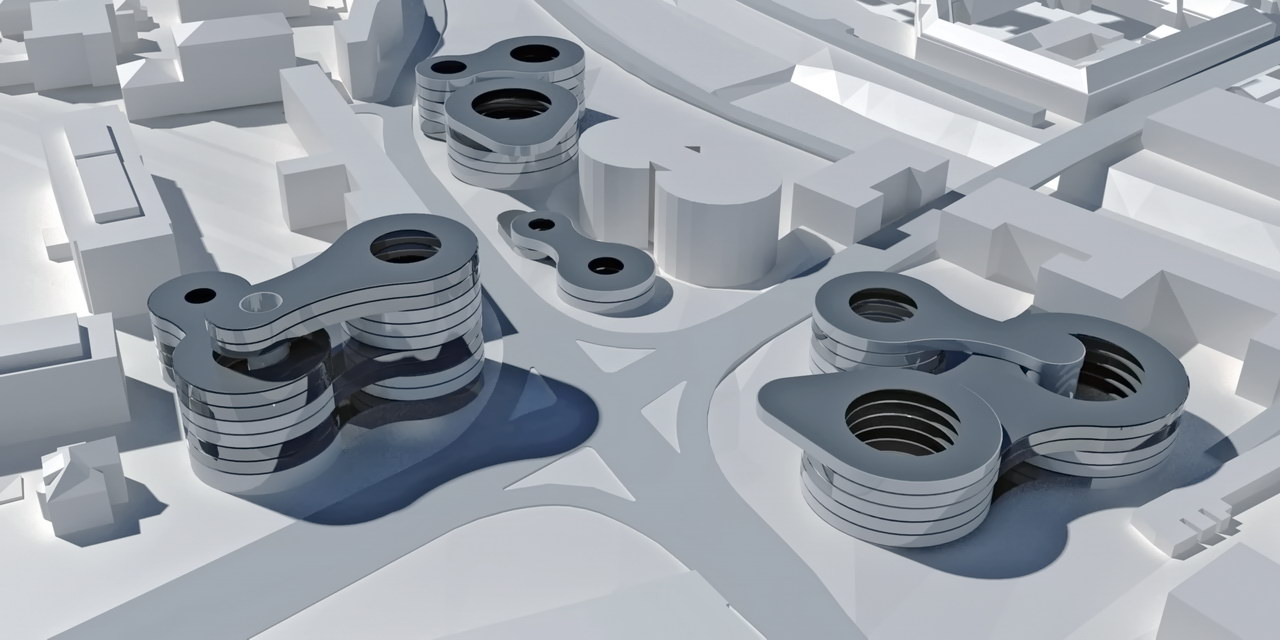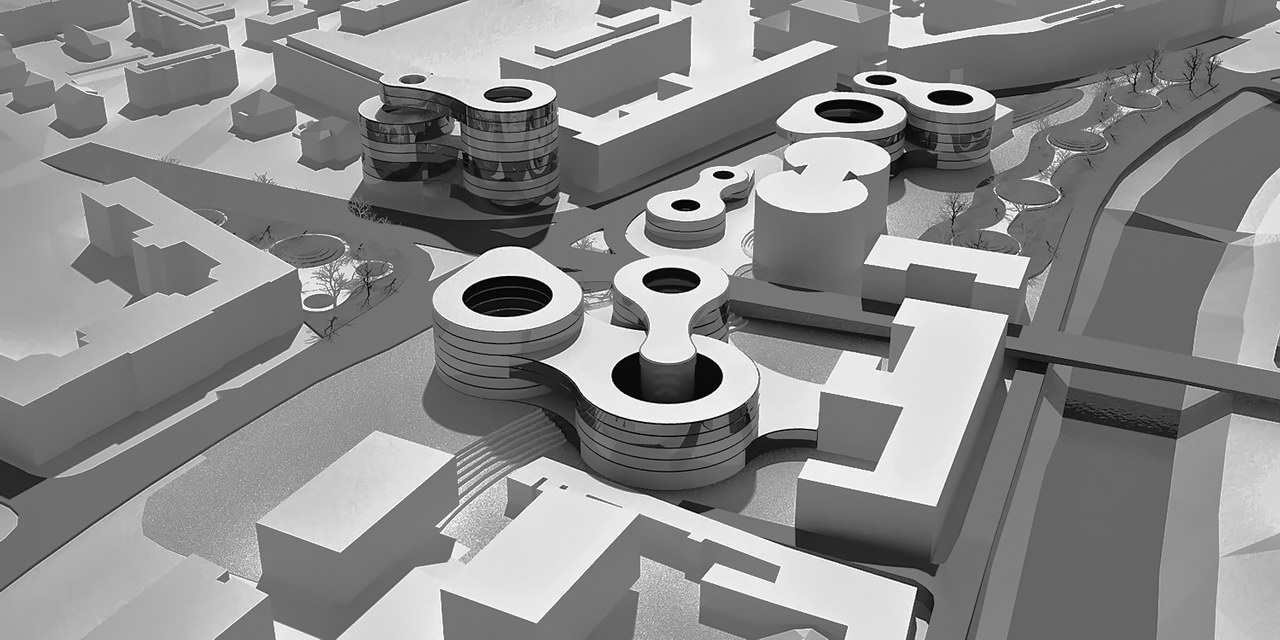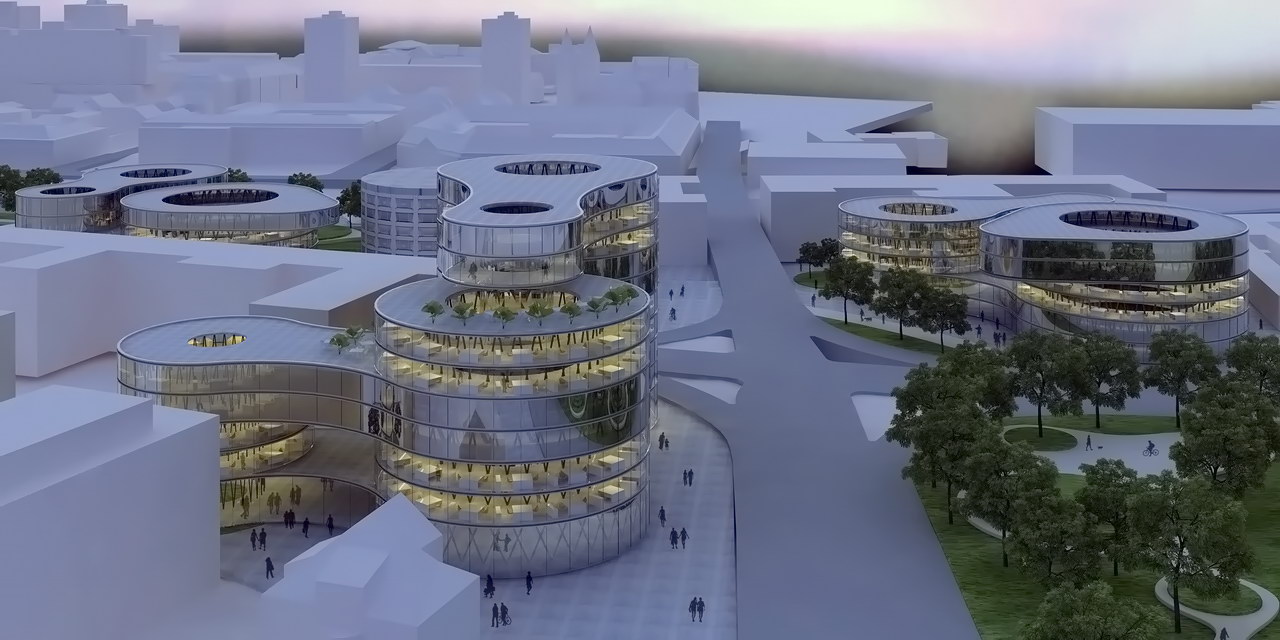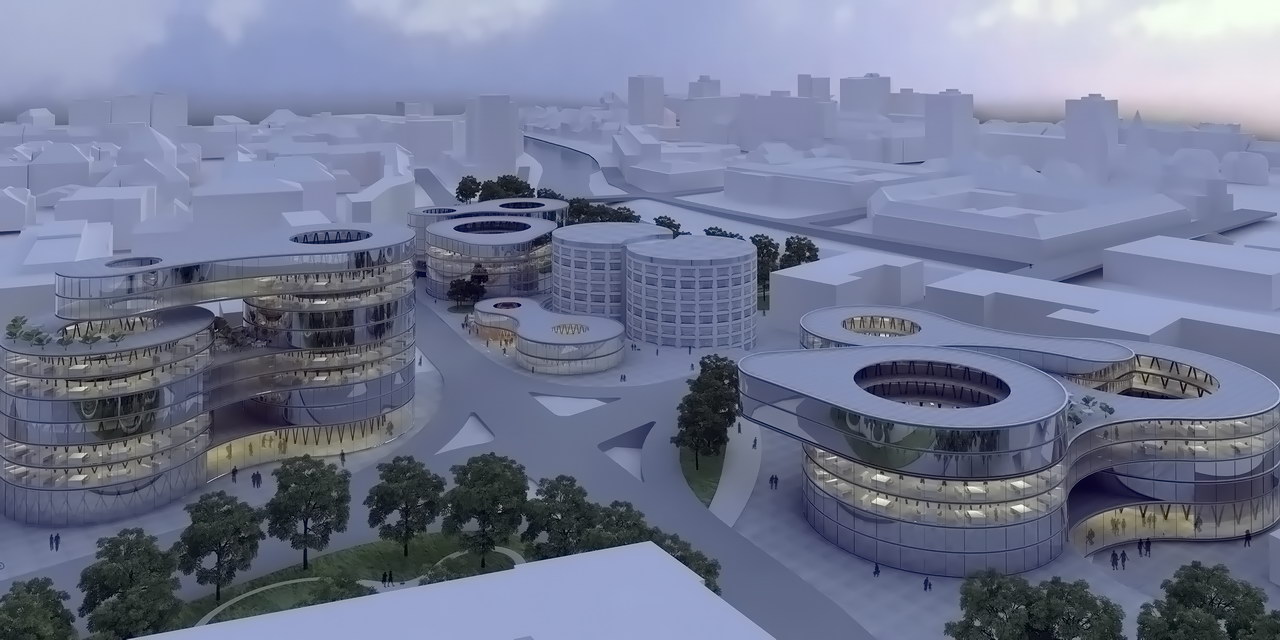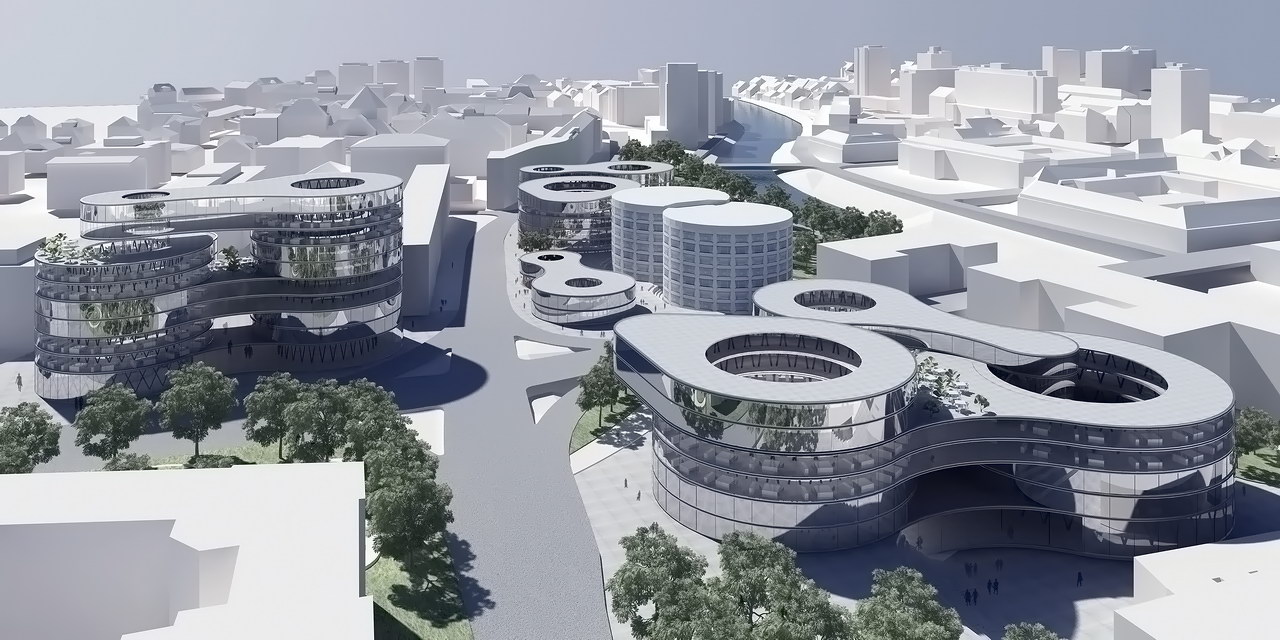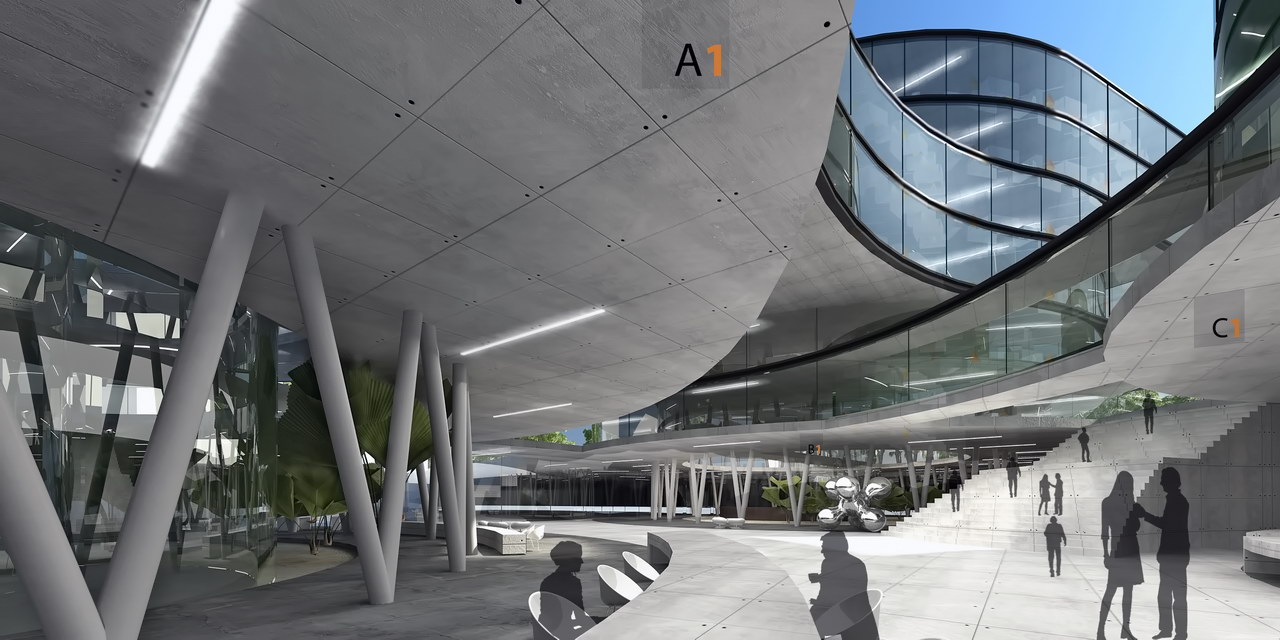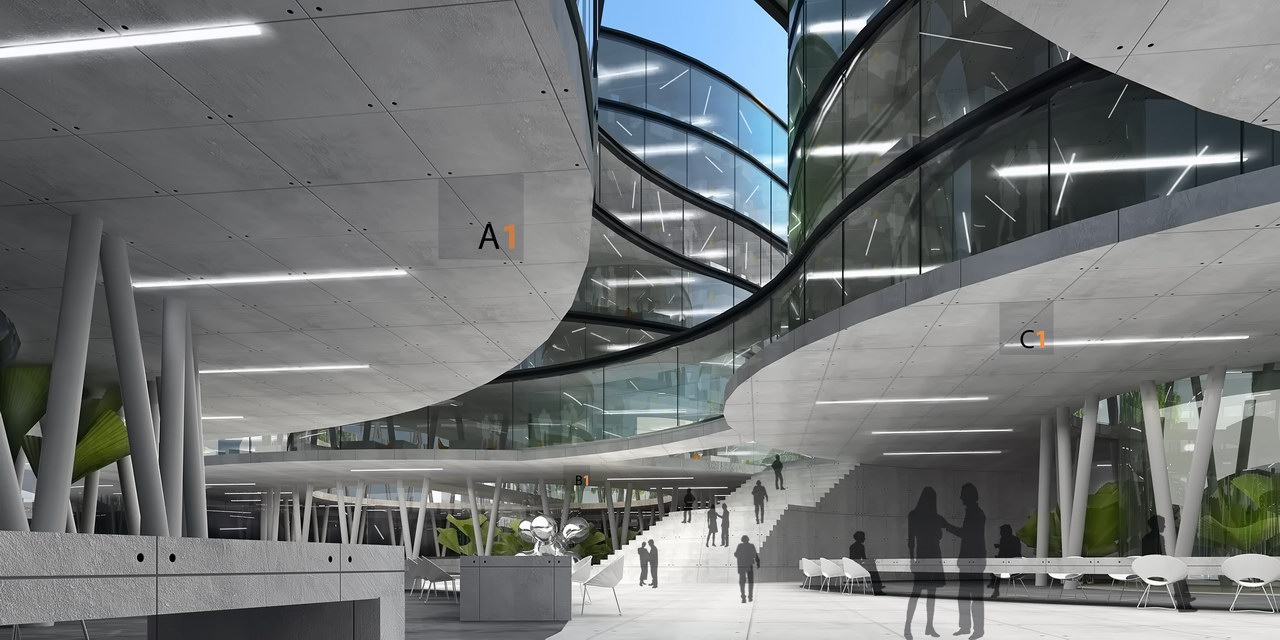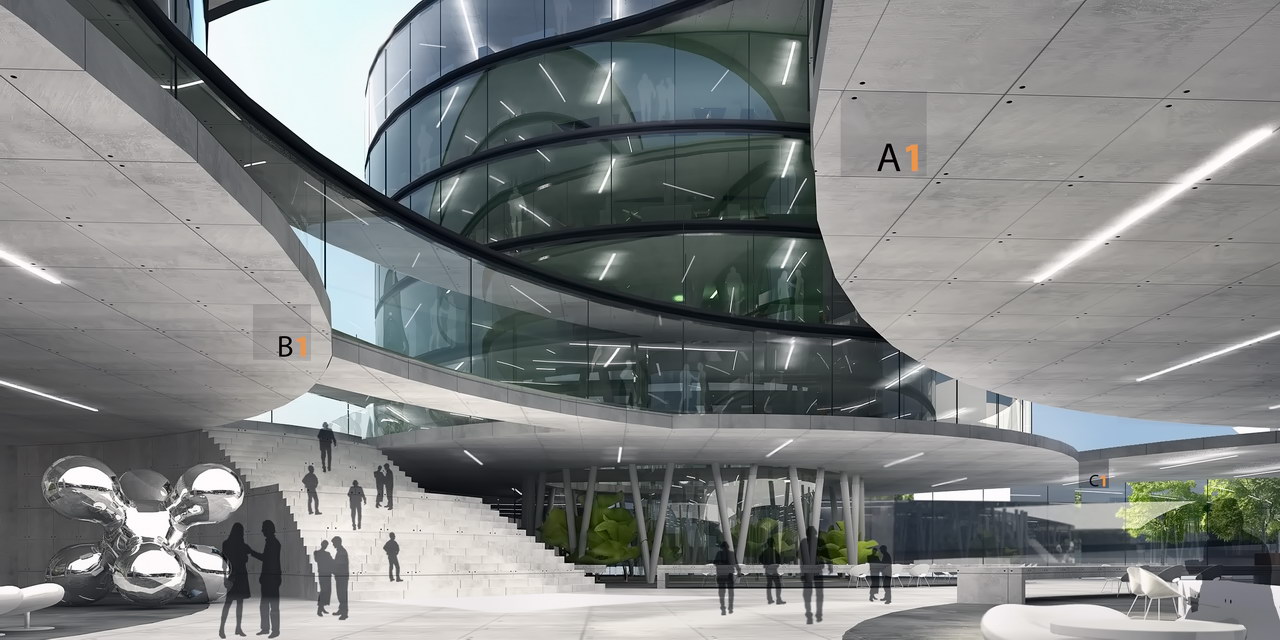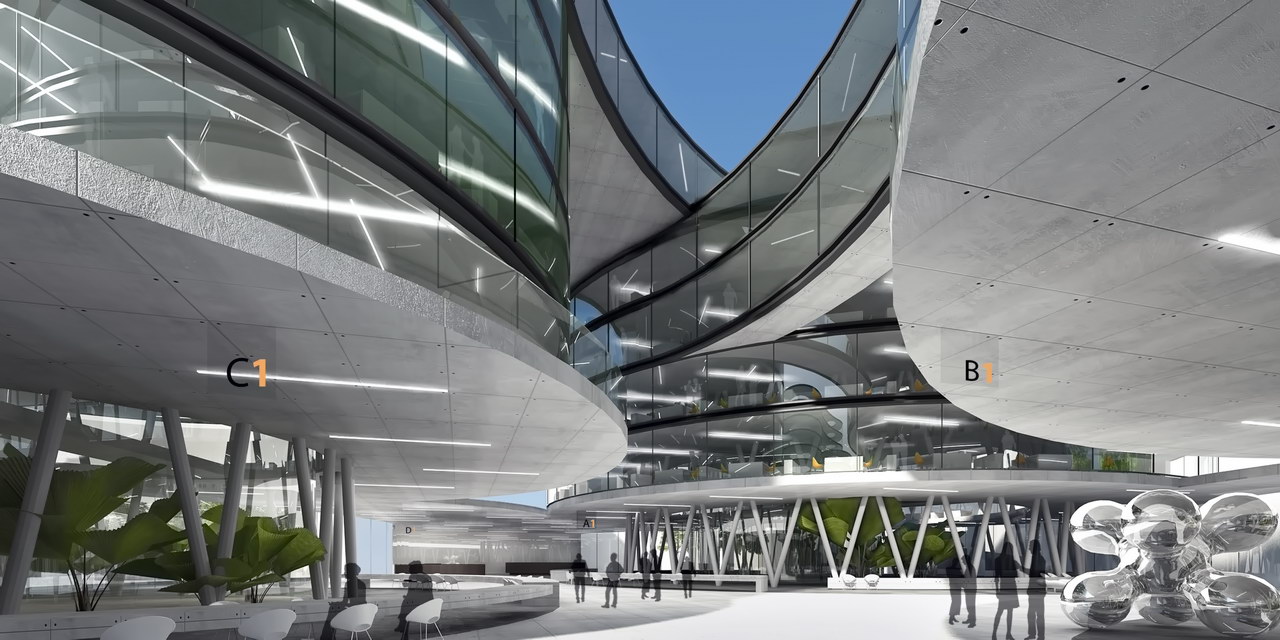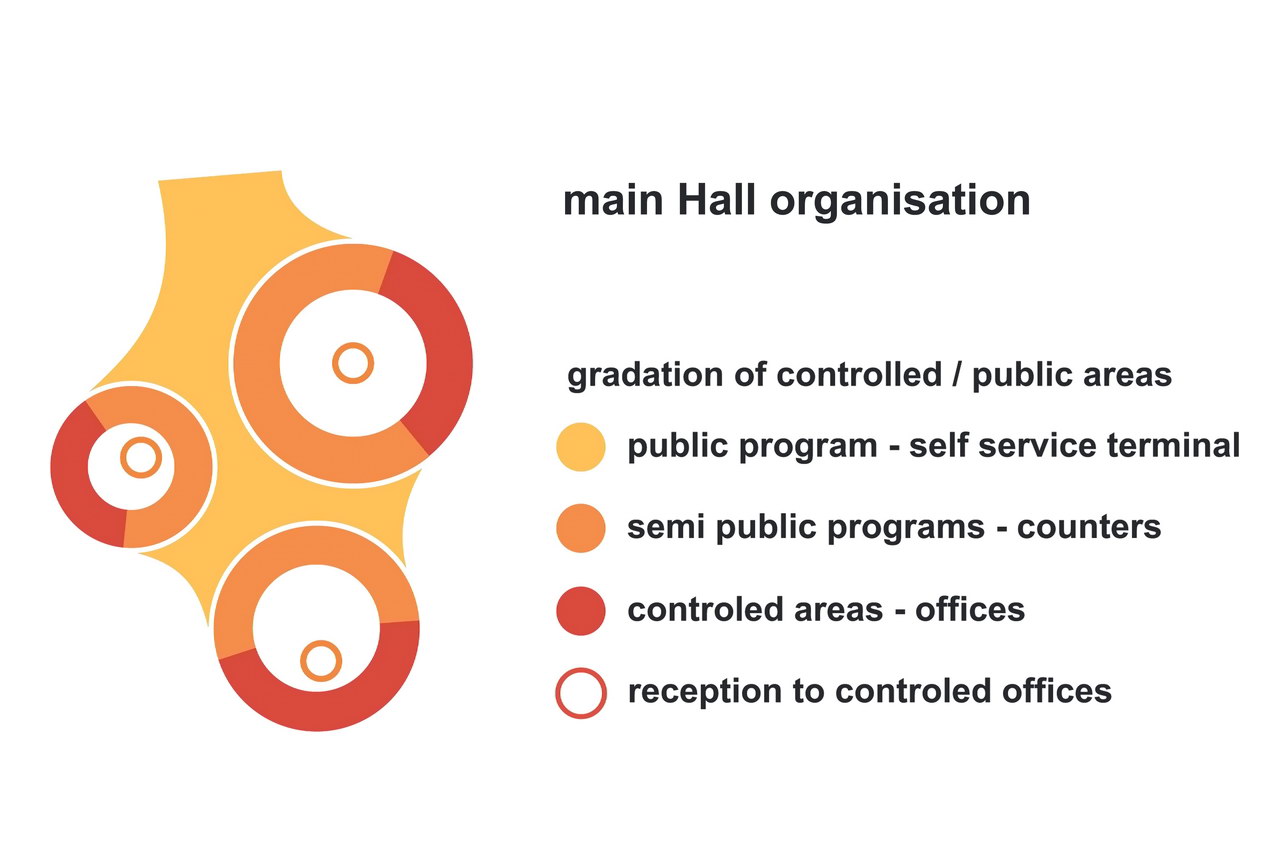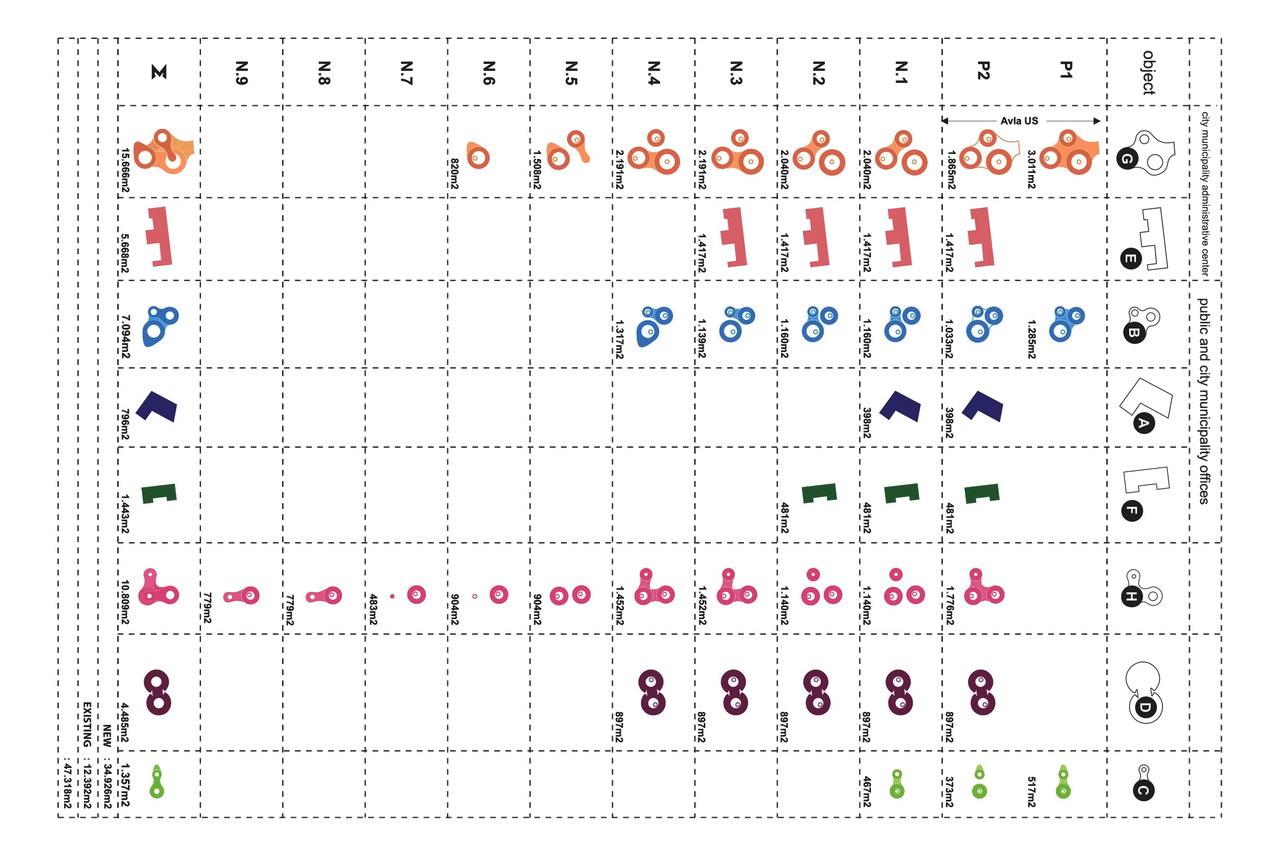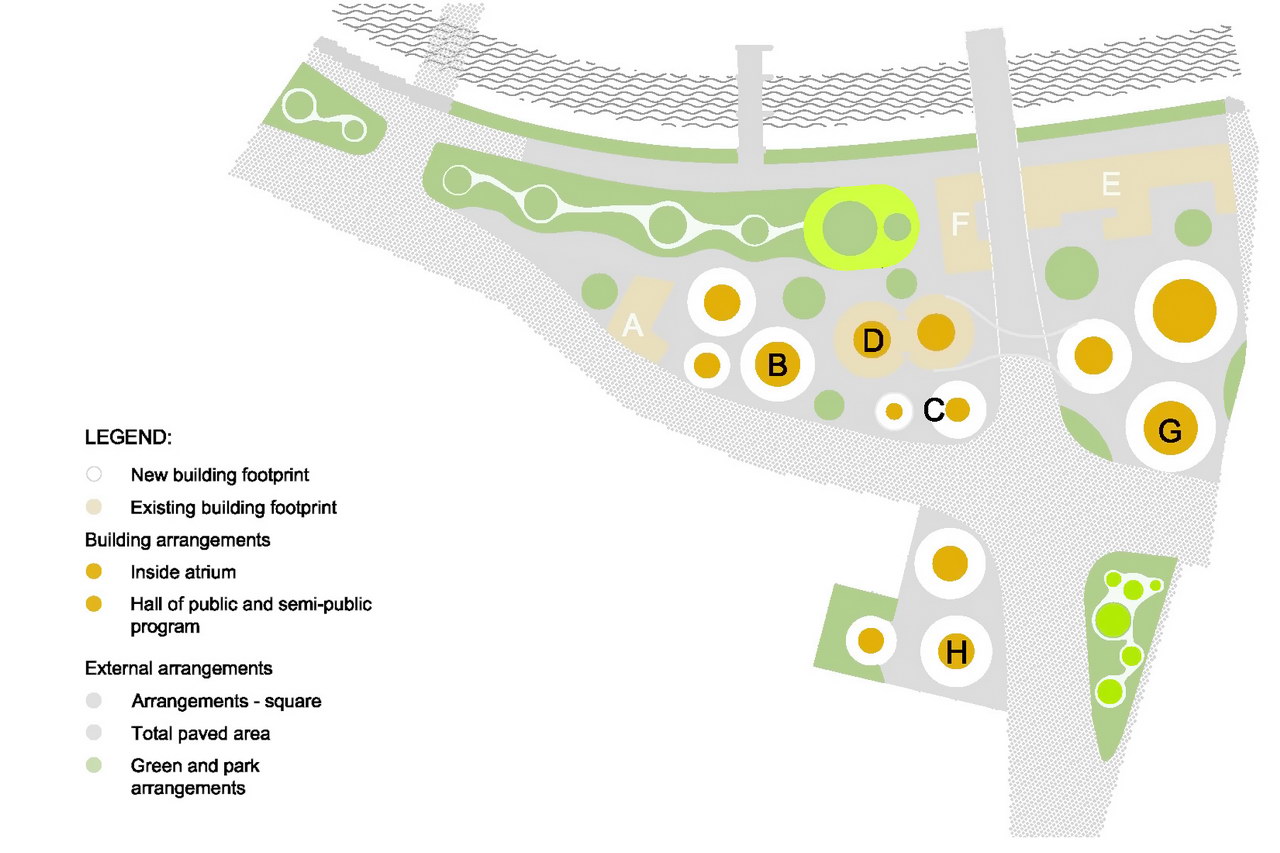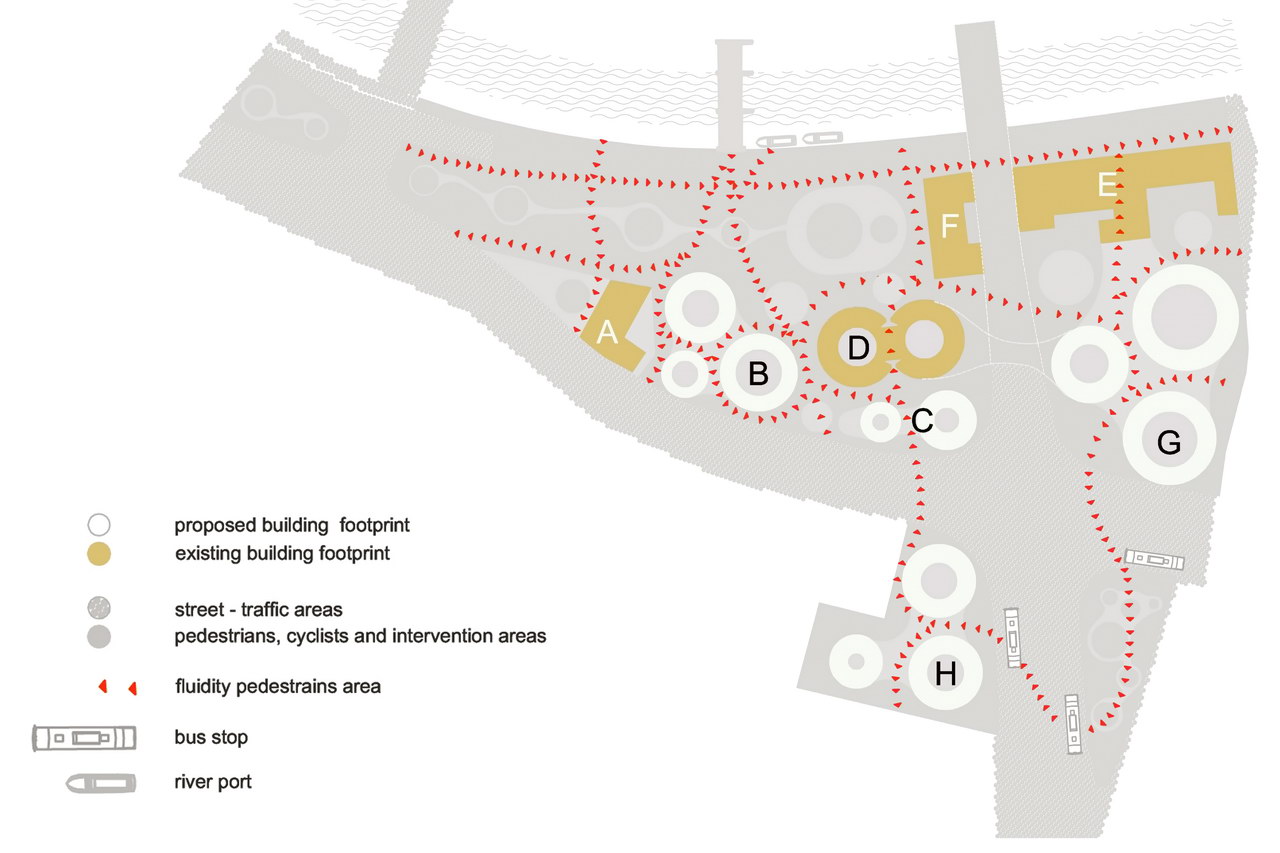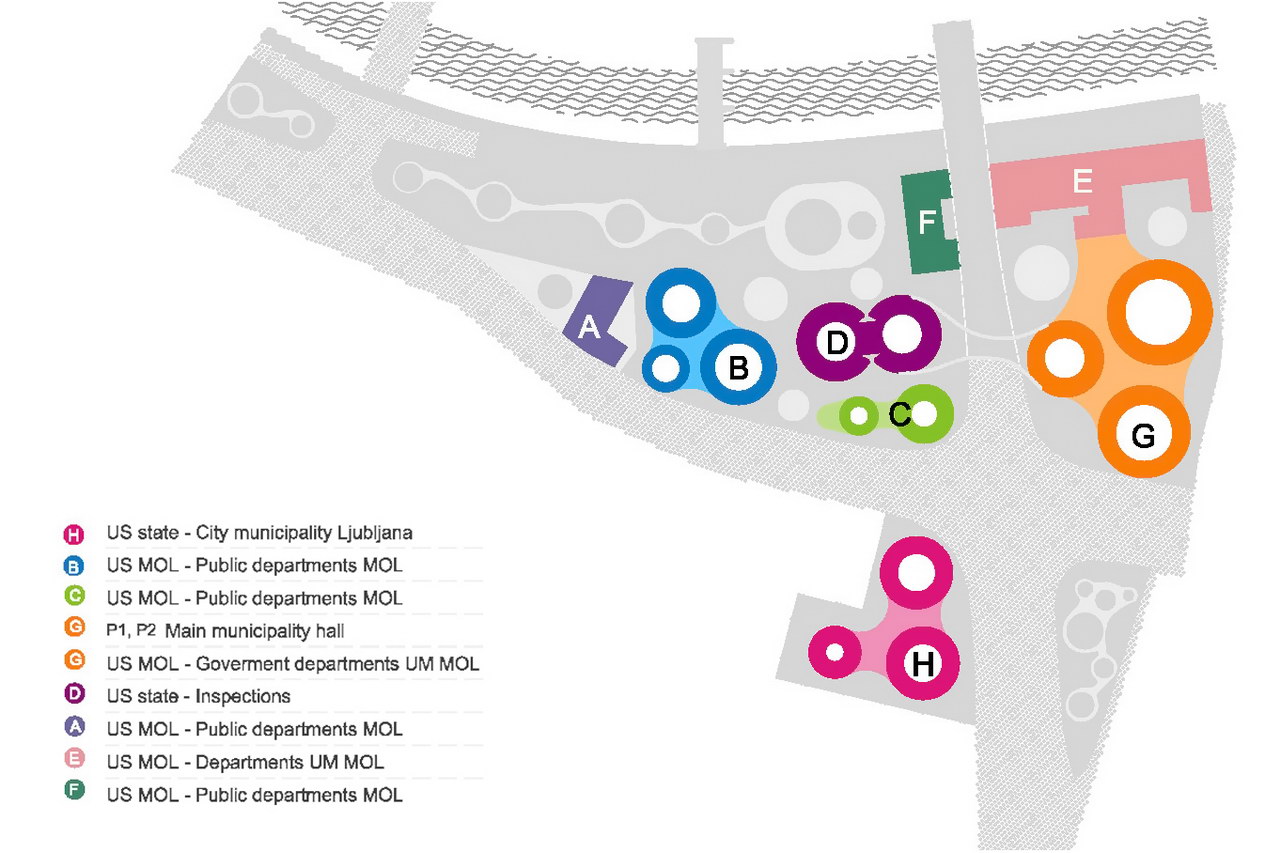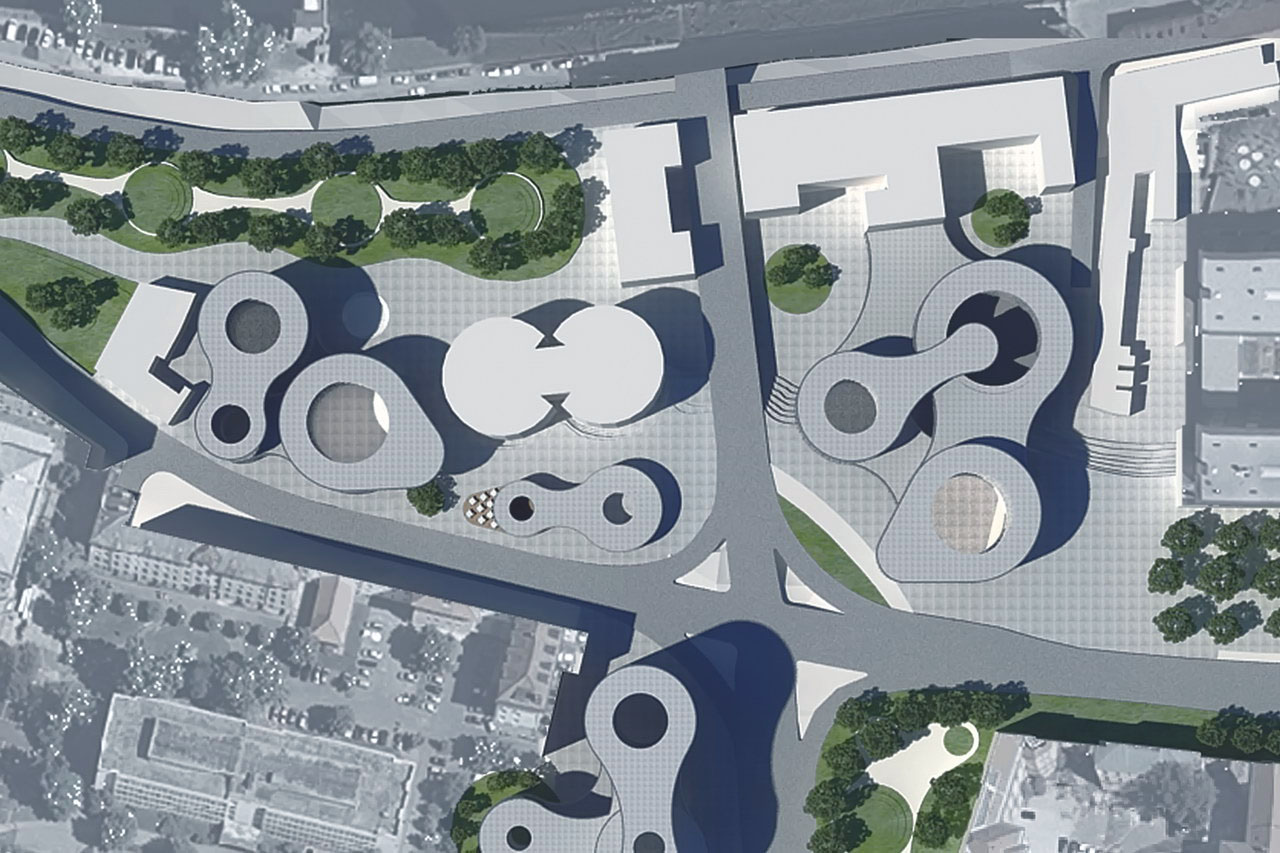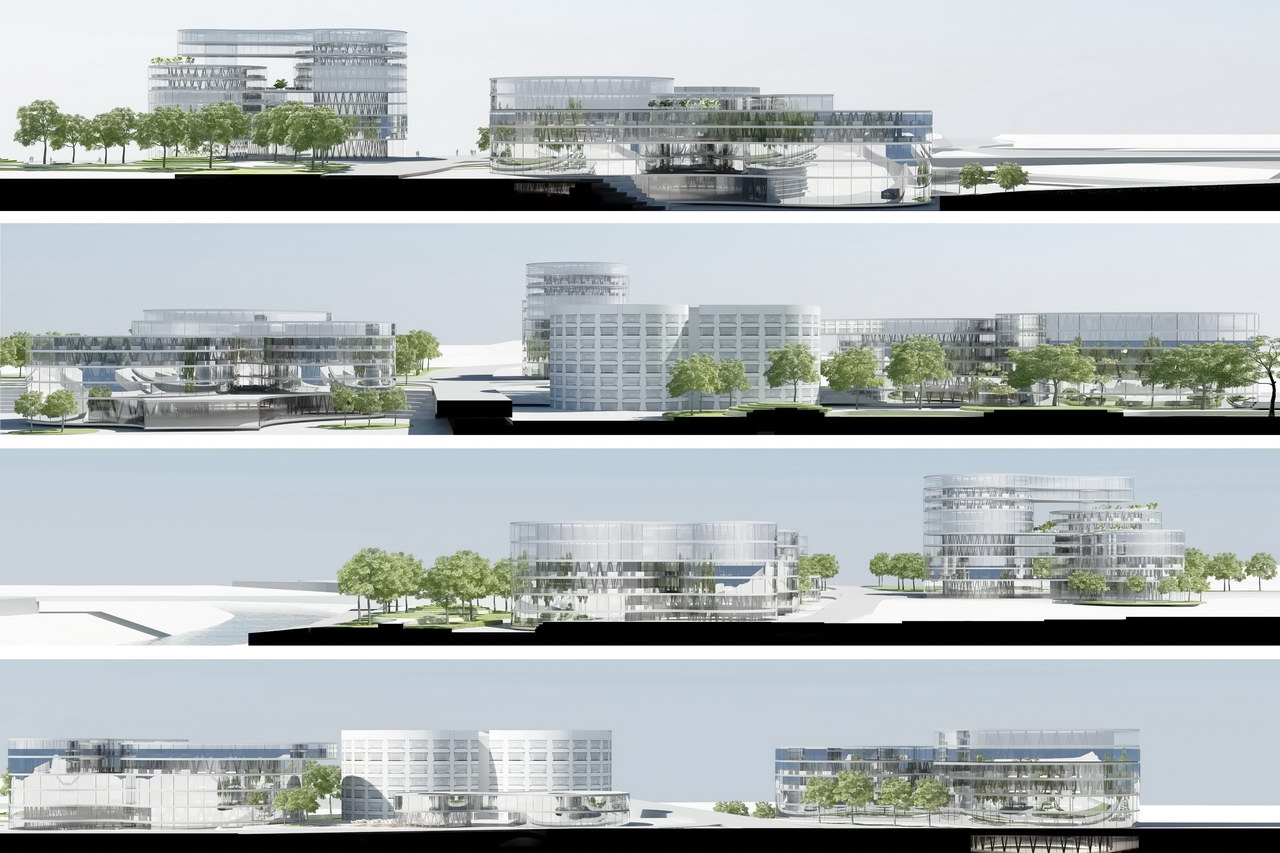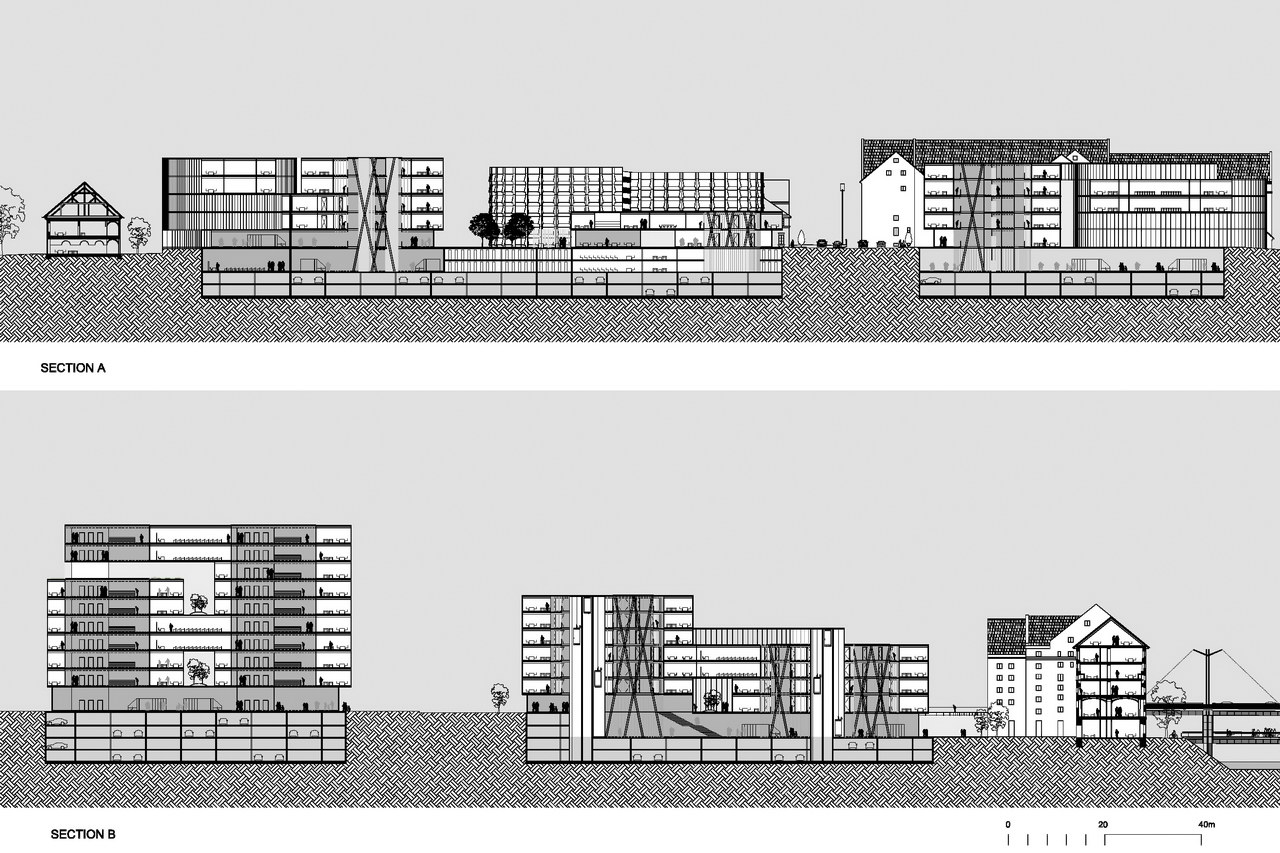HELIX OFFICES
The proposal is a competition entry for a new Ljubljana administrative center of 60.000 m2. The site is on the edge of Ljubljana city center and already occupied with some existing protected buildings by the river. At the heart of the project was to be a main hall where citizens arrange their documents. The brief proposed several departments to move to the same site but occupy different buildings in a campus. The area represents an opportunity for its rearrangement and become a sort of the city administrative symbol of contemporary Ljubljana. The mix of public and private areas inside the program calls for a complex organization, both inside and out. The project extended the concept of a cylindrical organization from the existing parking house from the 60-is (arch. Sever) in the heart of the site. Two departments can share meeting spaces in loop-bridges that connect two cylinders, creating a unique spatial condition. Three new buildings are designed as cylinders connected by loops of spaces. In the middle of each cylinder the public and entrance areas are organized and offices are arranged around these spaces. The logic of connected and disconnected departments follows a mathematical model of intersections and unions. The result is an extensive complex public space with numerous open spaces, landscape with external plazas, squares and bays of greenery and easy accesses to the potential new river promenade. Sustainable issues: Special care was taken to reduce the energy demands of the City Municipality project: reducing energy expenditure using high-performance building systems, and using renewable sources as much as possible to meet the demands of operation. The external façades will feature a high performance glazing and an adaptable external shading device to reduce solar gains in the summer. A radiant heating and cooling system, with pipes embedded in the concrete helps to condition the spaces without drafting complications. Decentralized ventilation units vent fresh air into the rooms and work intensively during the summer months. In winter, the fresh air will be heated inside the units and distributed into the rooms using the displacement ventilation principle.
Read moreProject team: Rok Oman, Spela Videcnik Andrej Gregoric, Janez Martincic Janja Del Linz, Robert Janez, Magdalena Lacka Sustainability concept: Markus Krauss, TRANSSOLAR Structural consultant: Jaka Zevnik, ELEA IC
